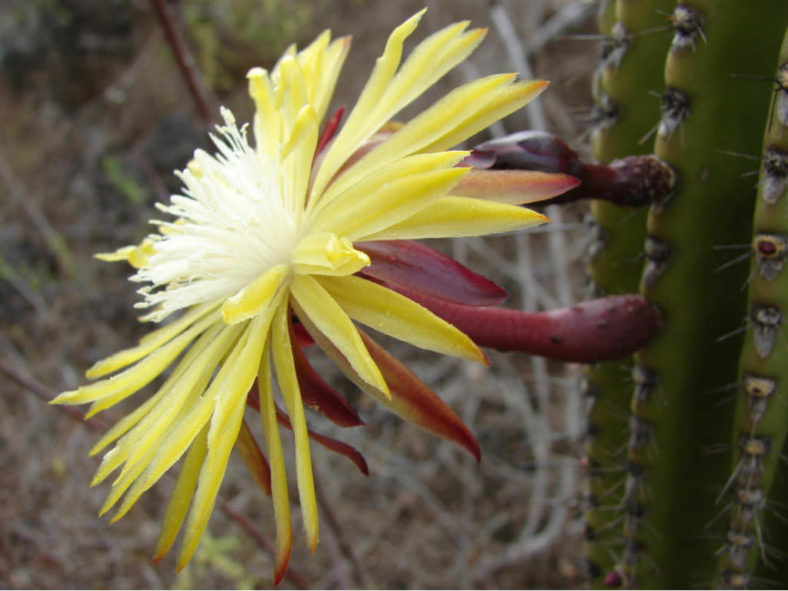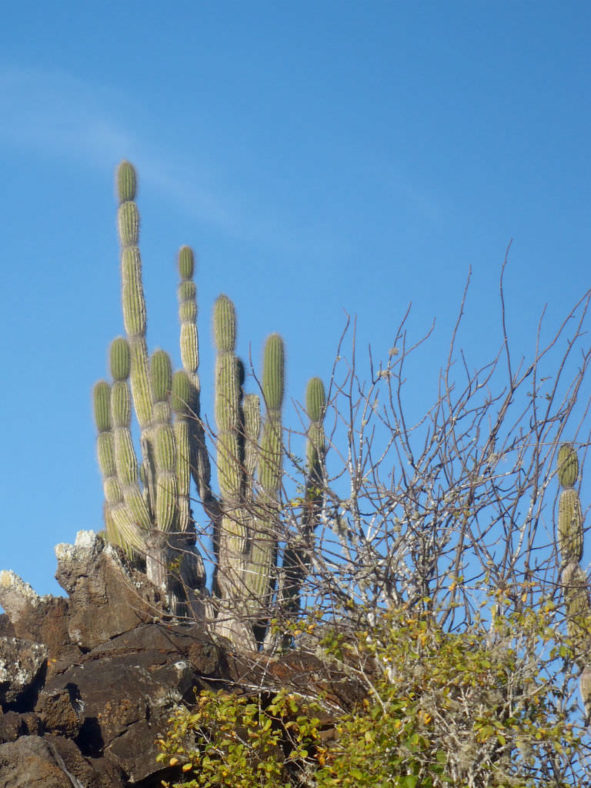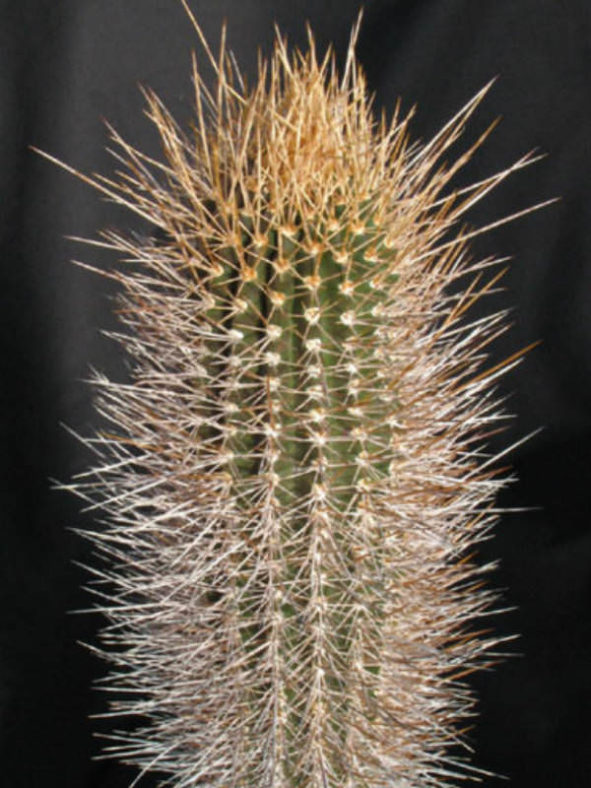Scientific Name
Jasminocereus thouarsii (F. A. C. Weber) Backeb.
Common Name(s)
Candelabra Cactus
Synonym(s)
Cereus thouarsi, Jasminocereus thouarsii var. thouarsii, Jasminocereus howellii, Cereus sclerocarpus, Brachycereus thouarsii, Cereus galapagensis, Jasminocereus galapagensis, Jasminocereus sclerocarpus
Scientific Classification
Family: Cactaceae
Subfamily: Cactoideae
Tribe: Browningieae
Genus: Jasminocereus
Etymology
The specific epithet "thouarsii" (pronounced "tho-AR-see-eye") honors Louis-Marie Aubert du Petit-Thouars (1758-1831), a French botanist and plant collector.
Origin
This species is native to Ecuador. It grows in arid areas on the Galapagos Islands, specifically Floreana, Isabela, San Cristóbal, and Santa Cruz.
Description
Jasminocereus thouarsii is a tree-like cactus with a green or greenish-yellow stem that usually separates into several branches. It can grow up to 16.4 feet (5 m) tall. The trunk and branches have 11 to 22 ribs and bear clusters of up to 35 spines per areole. The spines vary in color from white and yellow to reddish-brown or black and can measure up to 3.6 inches (9 cm) long.
The flowers can reach a diameter of 2.4 inches (6 cm), open at night, and have white, yellow, or olive green petals. The fruits are greenish to reddish-purple berries that contain many black seeds.

Hardiness
USDA hardiness zone 10a to 11b: from 30°F (-1.1°C) to 50°F (10°C).
How to Grow and Care
Like most cacti, Cereus is fairly low-maintenance and hardy. Ensure they receive enough water without becoming waterlogged, especially during the summer, and fertilize them for the best results. If the roots have become black or overly soft, the cactus could be experiencing root rot – cut away the affected parts and replant. Like all cacti, give them lots of direct sunlight, especially during the summer. Well-drained soil is best, and most Cereus plants perform well in soil that contains some organic material. Some recommend avoiding soil that contains sphagnum moss, though – it can make the cactus vulnerable to root rot.
Cereus cacti propagate quite easily from cuttings. Simply sever a branch and replant in moist, well-drained soil. It helps to allow the cut end to dry out and harden before you replant it. This makes it easier for the new cactus to form roots.
See more at How to Grow and Care for Cereus.
Links
- Back to genus Jasminocereus
- Succupedia: Browse succulents by Scientific Name, Common Name, Genus, Family, USDA Hardiness Zone, Origin, or cacti by Genus
Photo Gallery
Click on a photo to see a larger version.


